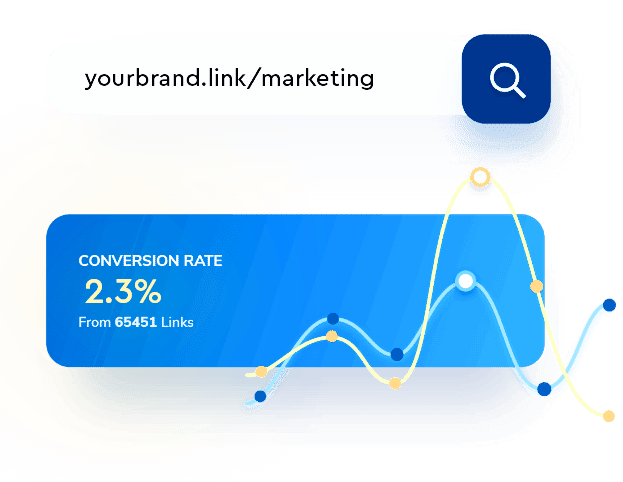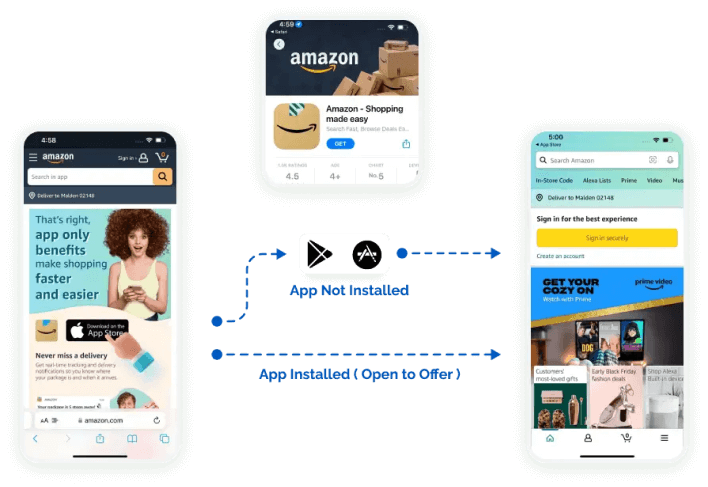In a world where countless brands vie for attention, how can you ensure your voice is heard, and your brand rises above the noise? The answer lies in mastering the art of online branding. Whether you’re an aspiring entrepreneur, a seasoned business owner, or a marketer looking to enhance your digital strategy, this guide is your compass to navigate the exciting world of online branding and emerge as a true digital champion.
In this guide, we will take a deep dive into the strategies, tactics, and insider secrets that can help you stand out, gain visibility, and create a lasting impact in the digital realm. From crafting a compelling brand identity to leveraging social media, content creation, and online advertising, we will leave no stone unturned on this journey to online branding excellence.
Moreover, this guide is more than just a collection of tips and techniques. It’s a roadmap that empowers you to unlock the true potential of your brand.
Let’s get started!
Online branding: What does it mean?
Online branding, also known as digital branding or internet branding, refers to the process of establishing and promoting a brand’s identity, image, and reputation through various online channels and platforms. It involves using digital marketing strategies and techniques to build brand awareness, engage with the target audience, and create a consistent and positive brand perception online.

Also read: What is Brand Awareness? 9 Trending Techniques to expand your Businesses via Social Media
Mastering online branding: Where do you begin?
To master online branding, start by laying a strong foundation. Define your brand identity, understand your target audience, and craft a compelling brand story. With a clear purpose and authentic presence, you can then dive into building a stellar website, creating engaging content, and leveraging social media.
These steps pave the way to online branding success, helping your brand stand out and thrive in the digital landscape.

Also read: 5 E-commerce Marketing Strategies for Brand Recognition
Here’s how the online branding process works:
1. Defining Your Brand Identity
Defining your brand identity sets the foundation for a cohesive and compelling online presence. It ensures that your brand communicates a clear and consistent message to your target audience, establishing a strong brand image and connection with your customers.

Here’s a breakdown of key aspects to consider when defining your brand identity:
Brand purpose and mission:
Start by defining the purpose of your brand—why it exists beyond selling products or services. Consider the impact you want to make and the value you aim to provide to your target audience. Your brand mission should be concise, meaningful, and aligned with the needs and aspirations of your customers.
Target audience:
Identify and understand your target audience. Develop detailed buyer personas to gain insights into their demographics, behaviors, preferences, and pain points. This knowledge will help you tailor your brand identity and messaging to resonate with your intended audience.
Also read: 15 Proven Facebook SEO Techniques To Increase Brand Visibility
Brand values:
Define the core values that your brand stands for. These values should guide your decision-making processes, business practices, and interactions with customers. Aligning your brand values with your target audience’s values fosters a sense of authenticity and connection.
Brand personality:
Determine the personality traits and characteristics that represent your brand. Think about how you want your brand to be perceived—whether it’s playful, sophisticated, authoritative, or friendly. This personality should align with your target audience’s preferences and resonate with them on an emotional level.
Visual identity:
Develop a visual identity that reflects your brand’s personality and resonates with your target audience. This includes designing a unique “logo design” and selecting appropriate color schemes, typography, and imagery that communicate your brand’s essence. Consistency across all visual elements strengthens brand recognition.
Brand voice:
Establish a distinct brand voice that reflects your brand’s personality and resonates with your target audience. Determine the tone, language, and communication style that align with your brand identity. Whether it’s conversational, formal, or playful, your brand voice should be consistent across all communication channels.
Consistency:
Consistency is key to brand identity. Ensure that your brand identity elements—such as visuals, messaging, tone, and values—are consistently applied across all touchpoints, including your website, social media profiles, advertising materials, and customer interactions. This builds trust, reinforces brand recognition, and strengthens your brand’s impact.
Branded Short Links
Create and track branded short links for your business for better conversions.
Brand Your Links Now!
2. Building a stellar website
Building a stellar website is a crucial component of online branding. Your website serves as a digital storefront, representing your brand and engaging visitors.

Here are key steps to create a standout website:
Define your website’s purpose:
Clarify your website’s objectives. Is it to showcase products/services, provide information, generate leads, or facilitate online transactions? Align your website’s purpose with your overall brand strategy.
User-centric design:
Prioritize user experience by designing an intuitive and visually appealing website. Ensure easy navigation, clear calls-to-action, and responsive design for seamless viewing across devices.
Consistent branding:
Infuse your brand identity into the website design. Use your logo, colors, fonts, and imagery that align with your brand. Consistency reinforces brand recognition and builds trust.
Engaging content:
Create high-quality, relevant, and compelling content. Craft persuasive copy, incorporate visuals, and include engaging multimedia elements to captivate visitors and convey your brand’s message.
Clear value proposition:
Clearly communicate the unique value your brand offers. Highlight key benefits and differentiators that make your products or services stand out from the competition.
Optimize for search engines:
Implement search engine optimization (SEO) techniques to improve your website’s visibility on search engines. Research relevant keywords, optimize meta tags, and create informative and keyword-rich content.
Also read: 15 Proven Facebook SEO Techniques To Increase Brand Visibility
Mobile-friendly experience:
With the increasing use of mobile devices, ensure your website is mobile-friendly. Responsive design and fast-loading pages are essential for providing an optimal user experience on smartphones and tablets.
Integration with social media:
Incorporate social media integration to encourage sharing and engagement. Display social media icons, integrate social sharing buttons, and embed feeds to enhance your brand’s online presence.
Clear contact information:
Make it easy for visitors to get in touch. Display your contact information prominently, including phone numbers, email addresses, and physical addresses. Consider adding a contact form for easy communication.
Regular updates and maintenance:
Keep your website fresh and up-to-date. Regularly update content, monitor functionality, and fix any issues. A well-maintained website reflects professionalism and reliability.
Also read: How to Unblock Websites: 7 Ways to Access Restricted Content
3. Creating Engaging Content
Creating engaging content is a crucial aspect of online branding that helps capture and retain the attention of your target audience.

Here are key steps to creating content that resonates and drives meaningful connections:
Know your audience:
Understand your target audience’s demographics, preferences, and pain points. Conduct research and develop detailed buyer personas to guide your content creation process.
Define your brand voice:
Establish a consistent brand voice that aligns with your brand identity. Determine the tone, style, and language that best represents your brand and resonates with your audience.
Craft compelling headlines:
Grab attention with attention-grabbing headlines. Use captivating language, pose intriguing questions, or promise valuable insights to entice readers to click and engage with your content.
Tell stories:
Storytelling is a powerful tool for engaging your audience. Use narratives, anecdotes, and personal experiences to convey your brand’s message and create an emotional connection with your readers.
Provide value:
Ensure that your content offers value to your audience. Educate, entertain, inspire, or solve problems for them. Deliver actionable insights, practical tips, or in-depth information that meets their needs and interests.
Utilize various formats:
Experiment with different content formats to cater to diverse preferences. Incorporate blog posts, videos, infographics, podcasts, and interactive content to deliver your message in engaging ways.
Also read: From Likes to Love: Comprehensive Social Media Engagement Guide
Visual appeal:
Incorporate visually appealing elements such as high-quality images, graphics, and videos to enhance the visual appeal of your content. Visuals not only capture attention but also help convey information effectively.
Encourage interaction:
Foster engagement by encouraging readers to leave comments, share their opinions, or participate in discussions. Respond to comments promptly to nurture a sense of community and connection.
Incorporate calls-to-action:
Guide your audience toward desired actions by incorporating clear and compelling calls-to-action (CTAs). Whether it’s subscribing to a newsletter, downloading a resource, or making a purchase, CTAs help drive conversions.
Analyze and optimize:
Regularly analyze the performance of your content. Monitor metrics like engagement, click-through rates, and conversions. Use this data to identify successful content strategies and optimize future content creation efforts.
Remember, consistency is key when creating engaging content. Develop an editorial calendar, establish a content creation routine, and ensure a steady flow of valuable content. By delivering content that resonates with your audience, you can build trust, strengthen your brand, and drive meaningful interactions in the online realm.
Use deep links for seamless navigation
Trigger more clicks, conversions & app installations with fully customizable deep links.
Learn More!
4. Social media branding
Social media branding is decisive for building and enhancing your brand’s online presence.

Here are key steps to effectively establish your brand on social media:
Define your social media strategy:
Clarify your goals and objectives for using social media. Determine which platforms are most relevant to your target audience and align with your brand’s values and messaging.
Also read: A Comprehensive Guide to Generate Leads With Social Media
Consistent branding elements:
Maintain consistent branding across all social media platforms. Use your logo, colors, fonts, and visual style to ensure brand recognition and cohesiveness.
Engaging profile:
Optimize your social media profiles to create a compelling first impression. Craft a concise and captivating bio, use high-quality visuals for your profile and cover photos, and include relevant links to your website or other online assets.
Content planning and creation:
Develop a content strategy that aligns with your brand identity and resonates with your target audience. Create a mix of engaging and shareable content, including text, images, videos, and interactive elements.
Consistent brand voice:
Maintain a consistent brand voice and tone in your social media posts. Whether it’s informative, conversational, or humorous, ensure it reflects your brand’s personality and resonates with your audience.
Audience engagement:
Actively engage with your audience by responding to comments, messages, and mentions. Encourage conversations, ask questions, and foster a sense of community around your brand.
Also read: Starter’s Guide to Setup Facebook Custom Audience
Hashtag strategy:
Utilize relevant hashtags in your posts to expand your reach and attract a wider audience. Research popular and industry-specific hashtags to enhance discoverability and engagement.
Influencer collaboration:
Consider partnering with influencers or brand advocates who align with your brand values. Collaborating with influencers helps expand your brand’s reach, build credibility, and generate buzz around your products or services, which is essential for an effective international expansion strategy.
Social media advertising:
Explore paid advertising options on social media platforms to reach a targeted audience and amplify your brand’s visibility. Set specific objectives, define your target audience, and craft compelling ad campaigns.
Analytics and optimization:
Regularly monitor social media metrics and analytics to track the performance of your social media efforts. Adjust your strategy based on insights gained and optimize content to maximize engagement and results.
5. Online advertising
Online advertising plays a vital role in boosting brand visibility, driving website traffic, and generating leads in the digital landscape.

Here are key steps to effectively leverage online advertising and promotion:
Set clear goals:
Define your objectives for online advertising and promotion. Is it to increase brand awareness, drive website traffic, generate leads, or boost sales? Setting clear goals helps you tailor your strategies accordingly.
Identify your target audience:
Understand your target audience’s demographics, interests, and online behaviors. This knowledge allows you to target your advertising efforts effectively and deliver relevant messages to the right people.
Choose the right advertising channels:
Select the online advertising channels that align with your target audience and goals. Options include search engine advertising (such as Google Ads), social media advertising (like Facebook Ads), display advertising, influencer collaborations, and native advertising.
Also read: How to add UTM parameters?
Craft compelling ad copy:
Create persuasive and engaging ad copy that grabs attention and compels viewers to take action. Clearly communicate your unique value proposition, highlight benefits, and include a strong call-to-action to drive conversions.
Utilize visuals:
Incorporate visually appealing images or videos in your ads to capture attention and enhance engagement. High-quality visuals that align with your brand identity help make your ads more memorable and impactful.
Landing page optimization:
Ensure that the landing page linked to your ads is optimized for conversions. It should align with the ad’s messaging, provide a seamless user experience, and have clear calls to action to guide visitors toward desired actions.
Also read: How to create a call to action using a URL shortener?
Monitor and adjust:
Regularly monitor the performance of your online advertising campaigns. Track key metrics such as click-through rates, conversion rates, and return on investment (ROI). Based on data insights, make necessary adjustments to optimize your campaigns for better results.
Utilize remarketing (retargeting):
Implement remarketing strategies to target users who have previously interacted with your brand. Remarketing allows you to re-engage potential customers and drive conversions by showing tailored ads based on their past interactions with your website or app.
Also read: 14 Crazy-Effective Ways to Boost E-commerce Sales Through Retargeting
6. Influencer marketing and collaborations
Influencer marketing has become a powerful strategy for brands to reach their target audience, build credibility, and drive engagement.

Here are key steps to effectively leverage influencer marketing and collaborations:
Define your goals:
Clearly define your objectives for influencer marketing. Is it to increase brand awareness, reach a new audience, drive sales, or generate user-generated content? Defining your goals helps you identify the right influencers and measure the success of your campaigns.
Identify relevant influencers:
Research and identify influencers who align with your brand values, target audience, and industry. Look for influencers with an engaged and authentic following, and analyze their content quality, reach, and engagement metrics.
Also read: 7 Strategies to Ensure your Next Influencer Marketing Campaign Is a Success
Establish authentic relationships:
Build genuine relationships with influencers based on mutual trust and shared values. Reach out to them with personalized messages that demonstrate your understanding of their content and how it aligns with your brand.
Collaborate on campaigns:
Work with influencers to create engaging and authentic content that resonates with their audience and promotes your brand. Collaborate on sponsored posts, product reviews, giveaways, or creative campaigns that showcase your brand organically and compellingly.
Set clear expectations:
Clearly communicate your expectations, campaign goals, and guidelines to influencers. Provide them with the necessary information, assets, and creative briefs to ensure a consistent brand message and visual identity.
Also read: The Step-by-Step Guide to Successful Influencer Marketing Campaigns
7. Tracking and analyzing performance
Tracking and analyzing the performance of your online branding efforts is essential for understanding the effectiveness of your strategies and making informed decisions.

Here are key steps to effectively track and analyze performance:
Define key performance indicators (KPIs):
Determine the specific metrics that align with your goals. Examples include website traffic, conversion rates, engagement metrics (likes, shares, comments), click-through rates, time spent on a page, bounce rates, and customer acquisition costs.
Set up analytics tools:
Implement robust analytics tools such as Google Analytics to track website traffic, user behavior, and conversion data. Use social media analytics tools to monitor engagement metrics, reach, and audience demographics across different platforms.
Also read: 5 Best Google Analytics Alternatives To Try in 2023
Create custom tracking links:
Use custom tracking links (UTM parameters) to identify the source of traffic and the effectiveness of different campaigns or channels. This allows you to attribute conversions and engagement to specific initiatives accurately.
Monitor website analytics:
Regularly review website analytics to gain insights into visitor behavior, traffic sources, popular pages, and conversion funnels. Identify patterns, trends, and areas of improvement to optimize your website for better performance.
Analyze social media metrics:
Leverage social media analytics platforms to track engagement metrics, follower growth, reach, and demographics. Analyze the performance of individual posts and campaigns to identify successful content and optimize future strategies.
Conduct A/B testing:
Test different variations of your content, landing pages, ads, and calls to action to identify which elements perform better. A/B testing allows you to make data-driven decisions and optimize your campaigns for improved results.
Use conversion tracking:
Implement conversion tracking pixels or codes on your website to track specific actions, such as purchases, form submissions, or newsletter sign-ups. This enables you to measure the effectiveness of your online branding efforts in driving conversions.
Also read: Track Your Success: How to Create a Tracking Link?
Monitor online mentions:
Utilize social listening tools to track online mentions of your brand, products, or industry keywords. This helps you understand the sentiment, identify customer feedback, and address any issues or opportunities proactively.
Compare performance over time:
Analyze performance data over different periods to identify trends, seasonal variations, and the impact of specific campaigns or initiatives. This allows you to make informed decisions and allocate resources effectively.
Generate reports and insights:
Compile regular reports summarizing key metrics, trends, and insights. Present the data in a clear and actionable format that helps stakeholders understand the impact of online branding efforts and guides future strategies.
Remember, tracking and analyzing performance is an ongoing process. Continuously monitor metrics, adjust strategies based on data insights, and experiment with new approaches to improve your online branding efforts and achieve your business objectives.
What is brand authority and why it’s important?
Brand authority refers to the level of expertise, credibility, and influence that a brand possesses within its industry or niche. It represents the brand’s reputation and perception as a trusted source of information, products, or services. Brand authority is built over time through consistent delivery of high-quality content, thought leadership, positive customer experiences, and a strong online presence.
Also read: How to Strengthen Your Social Media Presence Using Replug and ContentStudio
Brand authority: why it’s important?
Brand authority is important for several reasons:
Trust and Credibility:
Brand authority helps establish trust and credibility with customers. When a brand is perceived as an expert in its field, customers are more likely to trust its products or services, resulting in increased customer loyalty and advocacy.
Competitive Advantage:
Brands with high authority have a competitive advantage over their competitors. They are seen as leaders in the industry, attracting more customers and gaining a larger market share.
Thought Leadership:
Brand authority enables brands to position themselves as thought leaders. By sharing valuable insights, industry trends, and expert opinions, they become go-to sources for information and influence the conversation within their industry.
Brand Recognition and Awareness:
A brand with authority is more likely to be recognized and remembered by consumers. It stands out in a crowded marketplace, making it easier to attract new customers and retain existing ones.
Also read: How to Build Your Brand on YouTube – Branding on Youtube the Right Way!
Partnerships and Collaborations:
Brands with authority often have opportunities for partnerships and collaborations with other influential brands or industry leaders. These partnerships can further enhance their reputation and expand their reach.
Customer Acquisition and Retention:
Brand authority helps attract new customers who seek trusted sources of products or services. Additionally, it fosters customer loyalty, as customers are more likely to continue engaging with a brand they perceive as authoritative.
Media Coverage and PR Opportunities:
Brands with authority are more likely to attract media attention and PR opportunities. Journalists and influencers often seek expert opinions and insights from authoritative brands, leading to increased media coverage and brand exposure.
Also read: A Complete Guide To Use QR Code Marketing
Wrap up:
Building a strong online presence requires mastering online branding strategies. From defining your brand identity to creating engaging content, leveraging social media, and utilizing online advertising, each step plays a crucial role. Tools like Replug enhance reach and engagement. By continuously refining strategies and staying adaptable, you can establish a compelling online presence that sets you apart.
FAQs
What strategies can I use to enhance my brand’s visibility online?
To enhance brand visibility online, focus on search engine optimization (SEO), content marketing, social media marketing, influencer collaborations, online advertising, guest blogging, and leveraging partnerships with complementary brands.
How can online advertising and promotion boost my brand’s online presence?
Online advertising and promotion can boost your brand’s online presence by increasing visibility through targeted ads, reaching a wider audience, driving traffic to your website, and generating leads and conversions. It helps amplify your brand message and build brand awareness.
What role does content marketing play in online branding?
Content marketing plays a crucial role in online branding by providing valuable, informative, and engaging content that resonates with your target audience. It helps establish thought leadership, build trust, increase brand visibility, and drive organic traffic to your website.
How can influencer marketing help strengthen my brand’s online presence?
Influencer marketing can strengthen your brand’s online presence by leveraging the influence and reach of relevant influencers. Collaborating with influencers helps expand your brand’s reach, build credibility, and generate buzz around your products or services.
What are some common mistakes to avoid in online branding?
Some common mistakes to avoid in online branding include inconsistent messaging, neglecting social media engagement, ignoring customer feedback, lack of brand differentiation, and failure to monitor and manage online reputation.
How can I track and measure the performance of my online branding efforts?
You can track and measure the performance of your online branding efforts through analytics tools like Google Analytics, social media insights, tracking link metrics, conversion tracking, and monitoring key performance indicators (KPIs) such as website traffic, engagement metrics, and conversion rates.
You may also like:
How to Shorten a link using a URL shortener?
How To Put A Link In TikTok Bio?
How to Get Followers on Instagram Fast?
































